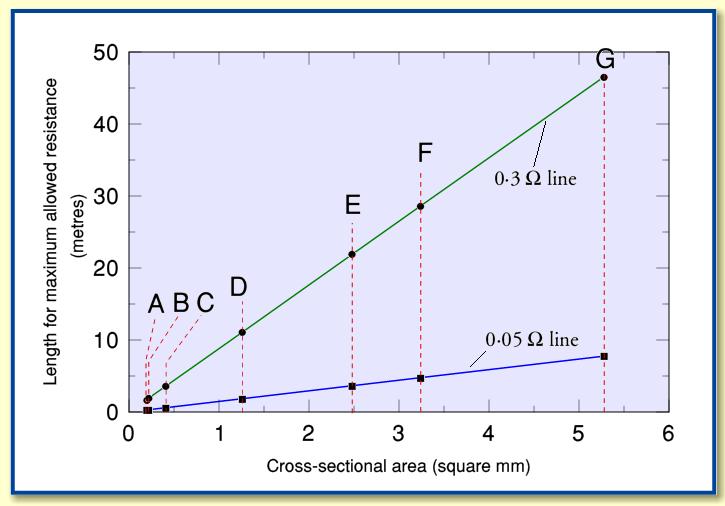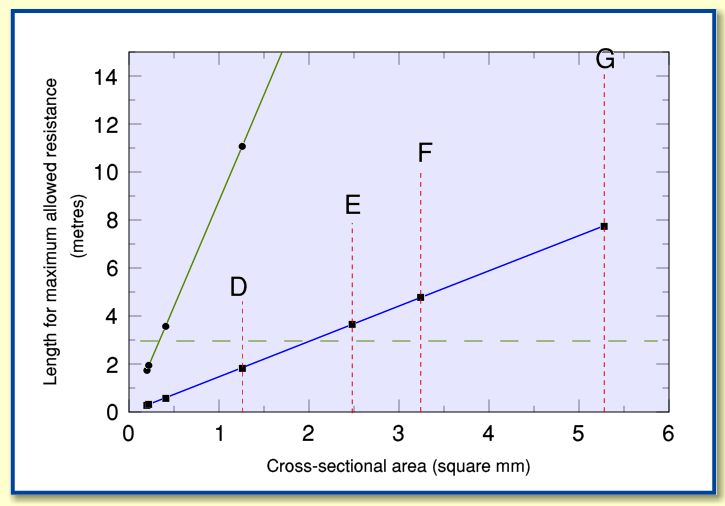
| Label on graphs |
Name | Part No | Strands per bundle |
Strand Dia (mm) |
| A | Bell Wire | XS92A | 1 | 0·50 |
| B | Min. LS Cable | XR39N | 7 | 0·20 |
| C | LS Cable | XS47B | 13 | 0·20 |
| D | Heavy Duty LS cable | XR60Q | 40 | 0·20 |
| E | Hi Fi LS Cable | XR72P | 79 | 0·20 |
| F | High Quality LS Cable S12 | XS37S | 415 | 0·10 |
| G | High Quality LS Cable S10 | XS37P | 1050 | 0·08 |

